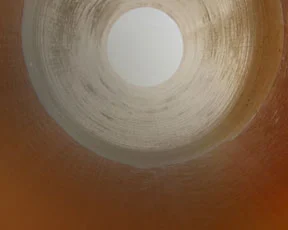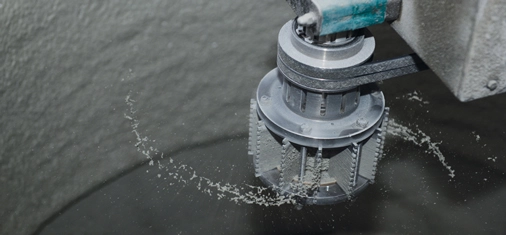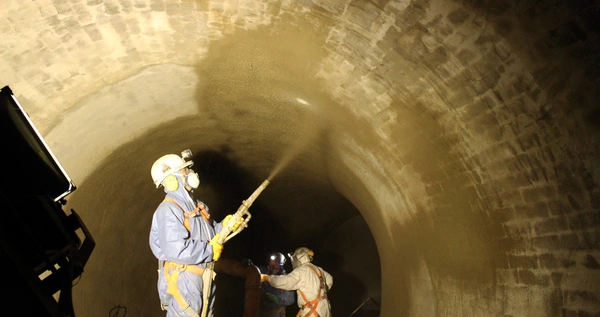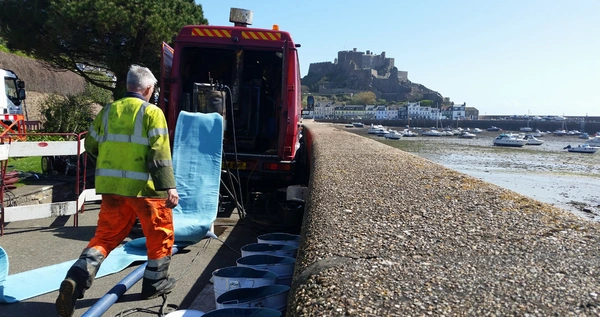As a standard, patch liner rehabilitation is used to repair non-accessible pipes and channels made of concrete, reinforced concrete, stoneware, fibre cement, cast iron and GRP (glass-fibre reinforced plastic) with nominal diameters (DN) from DN 100 to DN 800. It can also be applied in egg profiles and special profiles or in smaller or larger diameters, with special measures and precautions.
In accordance with DIN EN 15885, the patch liner method is a trenchless repair technique used to quickly and easily repair localized damages likes cracks, leaking joints, splintering etc. The short liner forms a load bearing and form-fitting bond with the pipe wall, thereby sealing the local damage. Additionally, it provides structural reinforcement to the repaired zone. In contrast to full “pipe lining” through CIPP or hose lining, in patch liner rehabilitation only individual small segments of a pipe are rehabilitated.
The Key to planning a sewer rehabilitation is to first carry out a condition survey of the existing damage, evaluating it and then selecting the appropriate repair method. Planning and preparatory guidance for repairs using short liners can be taken from DWA sheet DWA-A 143-1 (“Rehabilitation of drainage systems outside buildings – Part 1: Planning and Monitoring of Rehabilitation Measures”) and DIN EN 14645-2 (“Management and Monitoring of Operational Measures in Sewers – Part 2: Rehabilitation”). Also useful are execution instructions from system manufacturers, quality assurance manuals and any general building approval certificates for the short liner to be used.
When designing the execution and preparing the work, reference should be made to general processing instructions, quality assurance manuals and general building assessment approvals of the short liners used. In Germany, the DWA sheet DWA-A 143-7 (“Rehabilitation of drainage systems outside buildings – Part 7: Repair of sewer pipes and channels by short liners, T-pieces and hat profiles”) and the RSV information sheet 4 “Repair of non-pressurized sewer canals and pipes by on-site hardening short liners (partial inliners)” are also relevant.
A short liner is made from a support material that is soaked in reactive resin and then cured to form a locally limited inner lining. The support material usually consists of a corrosion-resistant glass fibre complex (E-CR according to DIN 1259-1), with a chopped fibre layer and a glass fibre fabric layer. Common reactive resins include organic-mineral resins (e.g. Konudur 250 OM-PL), epoxy resins, unsaturated polyester resins, polymethyl methacrylate resins, polyurethane resins and vinyl ester resins; among them, organic-mineral resins hold the largest market share. The typically two-component resins may, where applicable, be accelerated in curing by adding a third component, an appropriate hardening accelerator tuned to the resin.
The following types of damage may be rehabilitated using the patch liner method:
Once all the preparatory steps have been completed, e.g. implementing traffic safety measures, blocking the upstream flow, preparing the substrate, cleaning the pipe, preparing the packer, etc., the actual installation of the short liner can begin.
The pre-cut glass fibre mat is impregnated with the mixed resin. The amount of resin and the size of the support material are dimensioned according to the pipe’s nominal diameter and the length of the short liner. During layout of the fibre mat, care must be taken that the beginning and end of the liner extend at least 20 cm beyond the damaged zone. Joints should also be overlapped by at least 20 cm on both sides. If multiple short liners are installed in sequence, an overlap of at least 20 cm is required. The minimum length of a short liner must be 50 cm. During impregnation, the laminate should be folded in such a way that the final liner wall thickness does not drop below 3 mm. When folding, it must be ensured that the chopped fibre side is not on the interior side, manufacturer instructions must be followed.
The sufficiently impregnated glass fibre fabric is then wrapped onto the rehabilitation packer and fixed with appropriate auxiliary tools (e.g. adhesive tape, winding wire). Afterwards, the packer with the liner is inserted into the pipe, positioned at the damaged location and pressed against the pipe wall by expanding the packer. Once curing is complete, the pressure is released from the packer and the rehabilitation unit is withdrawn from the pipe.
The installation of a short liner is a suitable and proven method for carrying out quick and cost-effective repairs in sewer rehabilitation. With general building authority approval of the short liner system, installer qualification in accordance with RAL-GZ 961, quality assurance manuals, manufacturer's installation instructions and documentation of the work, you can ensure that the rehabilitation is carried out safely and to a high standard.
>> Click here for the product overview for patch liner rehabilitation.



More Products

ombran MHP-SP 3000 defies the toughest conditions
With ombran MHP-SP 3000, MC-Bauchemie has introduced into the market a new generation of mineral coatings for concrete and masonry manholes and sewers. Offering exceptionally high chemical…

Sewer rehabilitation

Sewer rehabilitation on Jersey
The sewers on the Channel Island of Jersey are being rehabilitated with pipe liners and Konudur 170 TL-NV, MC-Bauchemie's epoxy resin.
More
We are continuously improving our website and we use cookies for this purpose. For an optimal user experience, we recommend that you accept them. Otherwise, parts of the page will be deactivated in the display in accordance with data protection regulations.